
The merged A. P. Møller-Mærsk A/S was formed in June 2003 on the merger of D/S Svendborg A/S and D/S af 1912 A/S, with Group services then as follows:-
- EUROPE TO PERSIAN GULF AND INDIAN SUBCONTINENT – Weekly service designated AE3
- FAR EAST TO MIDDLE EAST AND MEDITERRANEAN – Weekly service designated AE4
- U.S.A. TO FAR EAST – Seven weekly services, five from the West Coast and one from the East Coast via the Panama Canal, and the seventh operated from the Eastern Seaboard via the Suez Canal
- ROUND THE WORLD – In conjunction with the above, and offering weekly Transatlantic services from the U.S.A. to Northern Europe and also from the U.S.A. to the Mediterranean
- WEST AFRICA – Weekly dedicated feeder services to and from Algeciras
- SOUTH AFRICA – Six new container ships were ordered for delivery in 2004/05 to replace the four ‘Big Whites’ of Safmarine on the joint SAECS service with P. & O. Nedlloyd and DAL of Germany. The Europe to South Africa service was then served by the new Group ships Lars Mærsk, Safmarine Nomazwe and Safmarine Nokwanda, with two new ships for P. & O. Nedlloyd and one for DAL of Germany
- CENTRAL AND SOUTH AMERICA – Weekly dedicated feeder services to the U.S.A. East and West coasts
- AUSTRALASIA – Three feeder services to Singapore and Japan from Australia and New Zealand
- INTRA-ASIA and INTRA-EUROPE – Extensive feeder services to connect with all of the above.
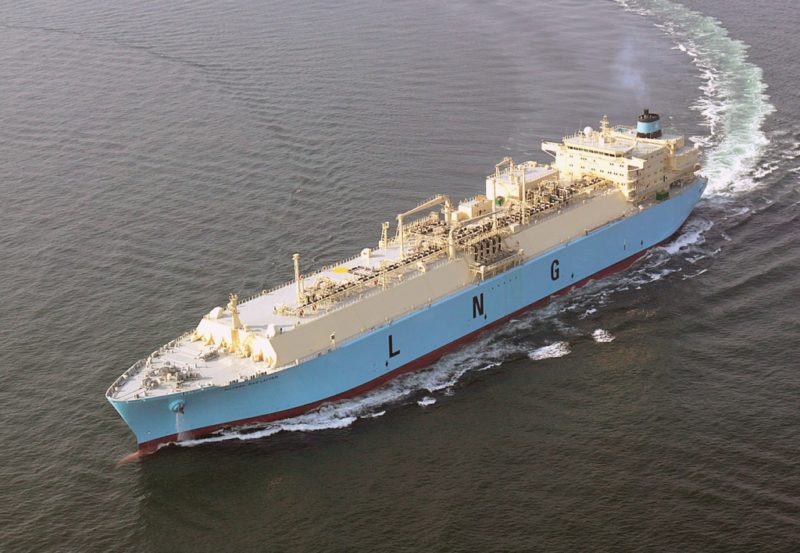
The large LNG carrier Mærsk Ras Laffan was delivered on 27th April 2004 from a South Korean yard for Qatar Shipping Ltd. in which Mærsk had a 25% interest. Apart from a similar interest in the earlier LNG Challenger in 1974 with P. & O., this was their first entry into the new expanding LNG market, with the port of Ras Laffan in Qatar set to be the main shipment point for the bulk of future LNG supplies. A sister was delivered as Mærsk Qatar in 2006 from the same Samsung yard at Keoje Island in South Korea, and five slightly larger sisters followed in 2008.
The Group Financial Report for the centenary year of 2004 showed that profits from container shipping had more than doubled to $1.5 billion with total profit at $3.2 billion as against $2.2 billion in2003. However, the Group shipbuilding business lost money, as did the Mærsk airline Mærsk Air. Tankers and offshore operations produced a result considerably above that of 2003. The Danske Bank with a 20%Group shareholding was now regarded as a Group subsidiary. APM TERMINALS and MæRSK LOGISTICS, both agencies of Mærsk-SeaLand, showed a big improvement in profits, while the sale of Mærsk IT boosted these excellent results. The Mærsk Board of Directors issued a dividend of Dkr 450 per share as against Dkr 300 per share in the previous year. The Mærsk-SeaLand fleet was now 300 owned and chartered ships of 12.0 million dwt, and the Møller-Mærsk tanker fleet was one hundred tankers of 17.0 million dwt.
APM TERMINALS is the Ports Division of the Group with headquarters in The Hague, and controls four European hub terminals of Hamburg, Bremerhaven, Rotterdam and Antwerp, as well as the former Sea-Land terminals at Boston, Houston, New York, Port Everglades, Tacoma, Jacksonville and New Orleans. In addition, over 50 more ports have Mærsk container activity and are organised into 17 geographic areas supported by a central Copenhagen office to complete the worldwide network. The total owned, leased and chartered fleet uses a container box stock of one million TEU boxes. The Mærsk order book was also equally impressive, consisting of over 70 container ships of which two dozen are of over 100,000 dwt, 30 tankers including 5 new LNG carriers for delivery in 2008, 3 vehicle carriers and several tugs for Svitzer Marine. The Safmarine fleet consisted of 40 container and general cargo ships, both owned and chartered, on SAECS (South Africa to Europe Container Service) as well as West African and Far East services from South Africa. The Sea-Land fleet also consisted of 40 container ships in 2004, many owned by American Banks and on routes across the world.
An offer of €56 per share on 10th May 2005 for all of the shares of Royal P. & O. Nedlloyd was accepted by the Anglo-Dutch company in a cash offer of €2.3 billion. Thus, Mærsk at number 1 in the container industry with 22% of world capacity took over number 3 to give Møller-Mærsk a capacity of 1.304 million TEU and maintain its preferred lead of over twice the capacity of its nearest competitor in MSC (Mediterranean Shipping Company) at 0.674 million TEU. The new workforce of the Danish, British and Dutch combine was 33,000 with 1,500 jobs lost in P. & O.Nedlloyd offices. The deal also included Reederei Blue Star, the wholly owned KG German company that had ships on long lease to P. & O.Nedlloyd. P. & O. made a book profit of £181 million on the deal for their 25% holding i.e. proceeds of£396 million less the cost of their share of the fleet at £215 million. Knud Stubkjaer, Chief Executive of Mærsk-Sealand, and Tommy Thomsen, Chief Executive of Mærsk Tankers, had played prominent parts in the takeover talks. The deal was ratified on 11th August 2005 after Mærsk had acquired 96.5% of P. & O.Nedlloyd shares.

The Group name in 2006 on container ships became MæRSK LINE instead of MæRSK-SEALAND, and P. & O. Nedlloyd withdrew from the Grand Alliance grouping to the Far East, and there were also ‘knock on’ changes to the South African and other consortia. Mærsk Air was sold to undisclosed buyers on30th June 2005 in the same month that Clementine Mærsk rescued 27 refugees to the south of Sicily and landed them at the Trinity Terminal in Felixstowe. The Group policy of rescue is in the best traditions of saving life at sea.
Crown Prince Mary of Denmark launched the ‘Super Post Panamax’ container ship Gudrun Mærsk of 9,000 TEU capacity at Odense on 7th May 2005, in a ceremony also attended by Mærsk McKinney Møller. A week later, the semi-retired, but still in overall control, former Chief Executive was in Le Havre to visit port officials and representatives of Terminaux de Normandie, which he last visited at the Frenchport in 1936. He was in Le Havre to discuss an ongoing dispute regarding the status of container gantry crane operators at the port, with 220 employees preferring to be employed directly by Le Havre Port Authority. APM Terminals had two gantries in the port, with CMA CGM of France using the remaining pair after they were completed.
Mærsk Olie og Gas greatly increased its presence in the North Sea in August 2005 with the acquisition of the oilfields of Kerr-McGee for $3 billion. These included the Leadon, Tullich, Gryphon, Janice, James, Affleck and Dumbarton oilfields and a small share of the Dorset onshore oilfield at Wytch Farm. In 2008, the new FPSO Mærsk Peregrino of 300,000 dwt was completed to serve at the Peregrino oilfield in offshore Brazil approximately 85 kilometres from the coastline in the Campos Basin in water depths of 100 metres. The second phase of this oilfield was developed at a cost of $3.5 billion and will begin production at the end of 2020. Several other Mærsk FPSOs were in service as storage and offloading tankers in Mærsk Curlew, the former Dorthe Mærsk of 100,000 dwt and built in 1983 at Odense, which was converted on the Tyne during 1996/97 into a FPSO for North Sea Production Co. Ltd. of Douglas, and her sisters North Sea Producer (ex Dagmar Mærsk) and Uisge Gorm (ex Dirch Mærsk), the latter for Bluewater Offshore, as well as the FPSO Global Producer III built in 2000, FPSO Gryphon A built in 1993, and the FGSO Nkossa II built in 1992 as the gas tanker Inger Mærsk.

In 2008, A. P. Møller Mærsk had a huge container ship fleet of 195 owned ships of 1.058 million dwt and a chartered fleet of 356 ships of 980,000 dwt, making a grand total of 551 ships of 2.038 million dwt. This fleet continued to ensure the pole position of the Møller Mærsk fleet in the world, with up to one hundred owned or chartered container ships used on the important Far East to Europe trades and centered on Chinese exports from their new huge container terminals. The eight members of the big ‘E’ class of 15,508 TEU capacity came into operation between 2006 and 2008.
The First Generation of the ‘Triple E Class’ of large container ships came into service between 2013 and 2015, with ‘Triple E’ meaning ‘Economy of Scale, Energy Efficiency, Environmentally Improved’. Their dimensions are length 399.2 metres (1,310 feet), moulded beam of 59.0 metres (194 feet) and a draft of 16.0 metres (52 feet), with a container capacity of 18,340 TEU and a deadweight of 196,000. They have four decks for containers, a service speed of 18 knots and a maximum ‘flat out’ speed of 23 knots from twin M.A.N. diesel engines, each of 39,800 bhp. They have a twin skeg design, unlike conventional single engine container ships, with twin diesels each driving a separate four bladed propeller of 9.8 metres diameter to allow a better distribution of pressure to increase propeller efficiency. The cost of each ship is $185 million, plus $10 million if Waste Heat Recovery (WHR) systems are also in place to cut fuel consumption to 21,200 gallons of fuel oil per day. WHR systems were also in place on the eight units of the ‘E’ class built between 2006 and 2008 with 22 rows of containers across the ship, an extra row athwart ships has been added to give 23 rows for the ‘Triple E Class’
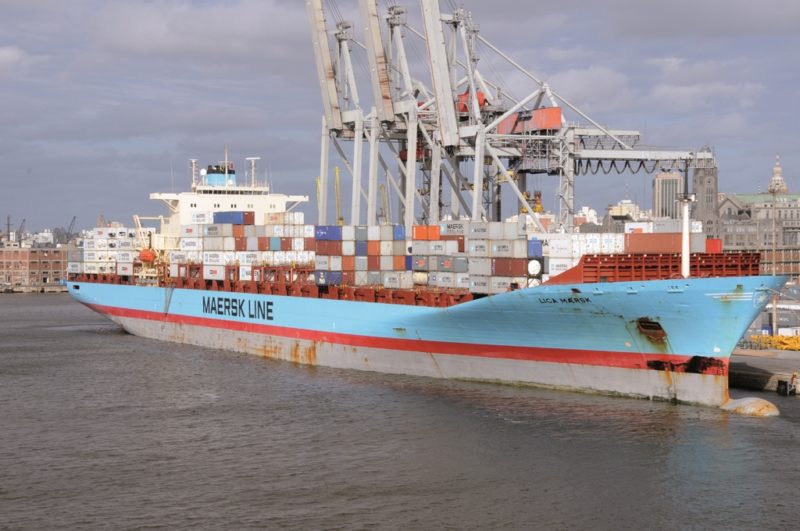
Daewoo Shipbuilding and Marine Engineering (DSME) of South Korea built three ‘Triple E’ Classat a time, with each mammoth ship taking just over one year to build. The Second Generation of the ‘Triple E’ Class’ has the same length and draft but a slightly increased beam to carry 20,568 TEU of containers, and uprated M.A.N. diesel engines to give 42,000 bhp for each engine. This gives a service speed of eighteen knots and a ‘flat out’ top speed of 25 knots to catch up schedules due to port delays. Twenty mammoth ships formed the first generation, and eleven mammoth ships formed the second generation of the ‘Triple E’ Class and were completed during 2017/18. These 31 giant ships have only a crew of thirteen and are used on the important Asia to Europe route, with Mærsk having a total of around one hundred ships on that route. The navigating bridge and crew accommodation are further forward then on the ‘E’ class of 2006/08, with twin funnels placed aft. They comply with the latest smoke and carbon dioxide emission figures, and their emissions are 20% less and their crew levels are six less than the ‘E’ class built between 2006 and 2008.
During December 2017, the Hamburg Süd container fleet was taken over, after Mærsk Line began talks with Hamburg Süd on 1st December 2016, which went well and resulted in the seeking of approvals from Fair Trade Commissions, the last of which was approved by the Korean Fair Trade Commission on 28th November 2017. The huge joint fleet encompassed 772 owned and chartered vessels of 4.15 million TEU and a 19.3% global fleet capacity share, and reinforced the global positions of both companies and enhanced the services to customers. Hamburg-Süd would retain its independence as a separate brand with its containerships continuing to have bright red hull colours, but integration of Mærsk Line and Hamburg-Süd ships on many services would produce savings estimated at $350 to $400 million per year from 2018 and 2019.

Soren Skou, CEO of Mærsk Line, welcomed with pride Hamburg Süd into the greatest container shipping group in the world, with many hurdles to the integration to be overcome. Hamburg Süd had one of the highest customer satisfaction ratings in the world, and Mærsk Line were determined to learn from this, and also from mistakes made when they took over the P&O-Nedlloyd Group. This was one of the largest transactions ever in the shipping industry, valued at over $4 billion, with both parties able to grow in the future, and with Soren Toft, Chief Operating Officer of Mærsk Line, joining the Board of Hamburg Süd.
Examples of integration between the two great companies have since included a new SAWC1service from Europe to Central America, Caribbean and West Coast of South America, with Luna Mærsk sailing from San Antonio northbound on 10th June 2019, and Lexa Mærsk sailing from Antwerp southbound on 6th June 2019. The Pacific and South East Asia services of Hamburg Süd were particularly strong through their Columbus Line subsidiary, with Hamburg Süd and Mærsk Line vessels now offering expanded AUSE services between Australia and South East Asia from October 2019. The AUSE1 string has seven container ships of 8,500 TEU capacity sailing from Singapore to Fremantle and then working anti-clockwise around Australia. The AUSE2 string has six container ships of 5,700 TEU capacity sailing from Singapore to Brisbane and then working clockwise around Australia before return to ports in South East Asia.
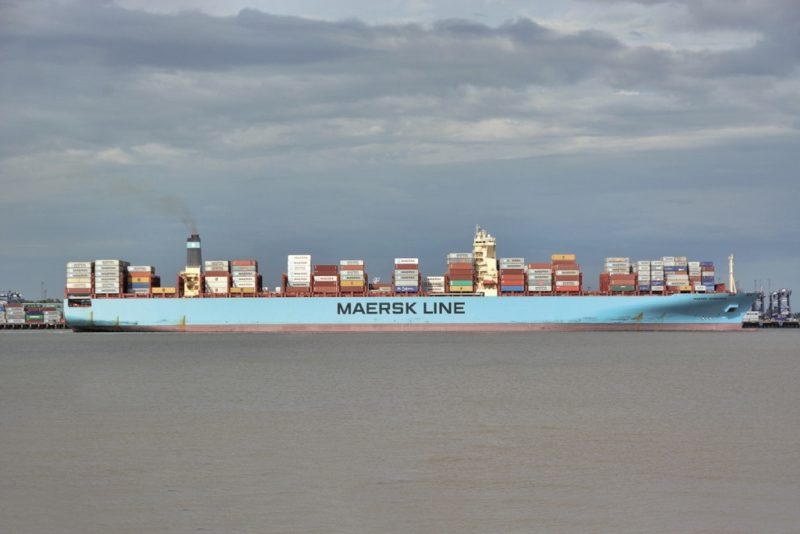
TWO MøLLER-MæRSK OPERATING DIVISIONS
TRANSPORT & LOGISTICS DIVISION
This division comprises the huge container ship fleet which has over 772 owned and chartered containerships and 19.3% of the global container capacity of the world, together with the ports arm of APM Terminals headquartered in The Hague. The latter operates in 57 ports and container terminals in 36 countries on 5 continents as well as 155 inland depots in 48 countries, with the main terminals as follows:-
Europe: Aarhus, Barcelona, Bremerhaven, Wilhelmshaven, Felixstowe, Gothenburg, Rotterdam, Zeebrugge, Algeciras, Savona, Poti, Valencia, Gijon, and Izmir
North America: Los Angeles, Miami, Mobile, Tacoma, and New York
Latin America: Buenos Aires, Itajai, Pecem, Callao, Santos, Lazaro Cardenas, Puerto Quetzal, Yucatan, Buenaventura, Cartagena, and Puerto Limon
Middle East: Aqaba, Haifa, Bahrain, Salalah, and Port Said
Asia: Cai Mep, Colombo, Dalian, Guangzhou, Kobe, Laem Chabang, Karachi, Pipavev, Qingdao, TanjungPelepas, Tianjin, Shanghai, Xiamen, and Yokohama
Africa: Abidjan, Apapa, Cotonou, Douala, Luanda, Monrovia, Onne, Pointe Noire, Port Elizabeth, Tangiers and Tema
ENERGY DIVISION
The oil and gas activities had provided A. P. Møller-Mærsk with more profits and revenue than the Transport & Logistics Division, until Mærsk Olie og Gas A/S was sold on 8th March 2018 to Total Oil for$7.45 billion. This sale was a combined share and debt transaction plus the takeover of all offshore decommissioning liabilities including the 31.2% interest in the Danish Underground Consortium (DUC).Most of the oil and gas came from the North Sea, Offshore Qatar, Algeria and Kazakhstan, while oil exploration was conducted in a dozen areas of the world, sometimes via membership of consortia. Mærsk Drilling owned 21 jack-up, semi-submersible, and ultra-deep water drill ships that provided drilling services to oil companies around the world. The tanker fleet, offshore supply ships fleet, and drilling fleet had provided most of the profits and revenue of the Energy Division. It is encouraging that more North Sea oil projects came on stream than expected during 2019/20, according to the Oil Industry Commission in Edinburgh. The split into only two operating divisions was made by Møller-Mærsk in September 2016.

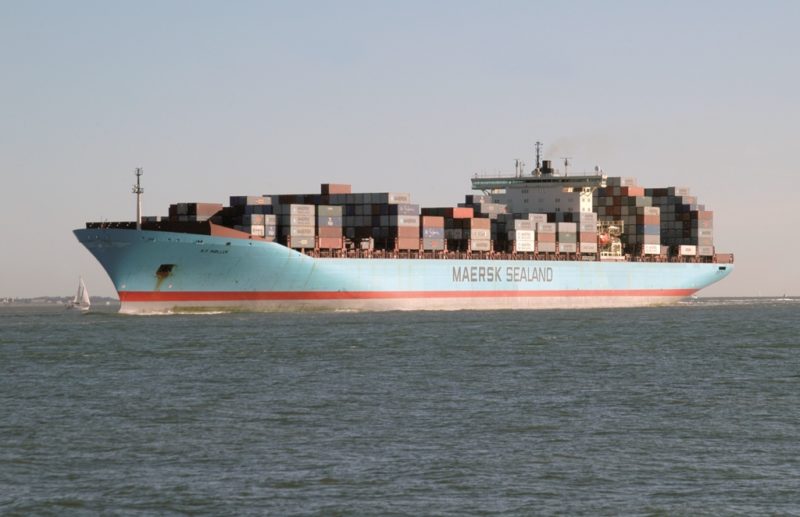
MøLLER-MæRSK SHIPPING AND RAIL SUBSIDIARIES
- DAMCO is the Møller-Mærsk freight forwarding arm with 10,800 employees in offices in around 100 countries, and is the seventh largest freight forwarding company in the world.
- SVITZER was founded in 1833 and currently has a huge fleet of over four hundred tugs worldwide for harbour and terminal towage services in over one hundred ports and twenty oil and gas terminals. A salvage arm of Svitzer was formed jointly with Crowley Titan Salvage of the U.S.A. and is based in Houston.
- MÆRSK LINE Ltd. owns U.S. flag vessels for Federal Government and commercial company charters and services. Vessels have ‘Mærsk’ prefixes and names of U.S. States and cities as suffixes.
- MCC TRANSPORT owns vessels for the Intra-Asia ports market with ‘MCC’ prefixes to their names.
- SEAGO LINE owns vessels for the Mediterranean ports market with ‘SEAGO’ prefixes to their names.
- MERCOSUL LINE owns vessels trading to Brazilian ports with ‘MERCOSUL’ prefixes to their names and names of Brazilian ports as suffixes.
- SAFMARINE has over forty container ships and over twenty multi-purpose ships on services throughout Africa.
- HOEGH AUTOLINERS is owned 37.6% by Møller-Mærsk with eighteen PCTC (Pure Car Truck Carriers) vessels handed over to Hoegh for operation, which in total has 67 car carriers and transports two million car units per year.
- EUROPEAN RAIL SHUTTLE B.V. with headquarters in Rotterdam provides rail transport of containers as a leading inter-modal rail operator and railway undertaking.
- SEALAND has been part of Møller-Mærsk since 1999, and currently provides inter-modal rail services from North America to Central and South America and return.
- MÆRSK CONTAINER INDUSTRIES manufacture containers in Dongguan and Qingdao in China and Tinglev in Denmark.

A.P. MøLLER MæRSK DANISH CONTAINER SHIPS
The first owned container ship was completed in January 1974 as Svendborg Mærsk of 2,628 TEU capacity and was followed by a few purchased vessels from Ben Line, East Asiatic Company (EAC) of Denmark, Wilhelmsen of Norway and Swedish East Asiatic Company (Brostrom). After these, all subsequent container ships were built in classes of varying units, with the suffix of ‘Mærsk’ denoting an owned vessel registered in Denmark. The important classes were:-
- ‘A’ CLASS of 2,092 TEU capacity built in 1975/76 Adrian Mærsk, Albert Mærsk, Anna Mærsk, Anders Mærsk, Arthur Mærsk, Axel Mærsk, Arnold Mærsk, Alva Mærsk, Arild Mærsk.
- ‘L’ CLASS of 3,016 TEU capacity built in 1980/84 Laura Mærsk, Leise Mærsk, Lexa Mærsk, Lars Mærsk, Louis Mærsk, Leda Mærsk, Lica Mærsk, LunaMærsk, Laust Mærsk, Leise Mærsk (2), Lindo Mærsk.
- ‘C’ CLASS of 1,169 TEU capacity built in 1991/94 Chastine Mærsk, Charlotte Mærsk, Cornelia Mærsk, Clifford Mærsk, Christian Mærsk, Clara Mærsk, Cecilie Mærsk, Claes Mærsk, Caroline Mærsk.
- ‘T’ CLASS of 1,500 TEU capacity built in 1990/94 Thorkil Mærsk, Tobias Mærsk, Torben Mærsk, Trein Mærsk, Tinglev Mærsk, Thomas Mærsk.
- ‘M’ CLASS of 4,422 TEU capacity built in 1988/95 Marchen Mærsk, Marit Mærsk, Maren Mærsk, Margrethe Mærsk, Mathilde Mærsk, Mette Mærsk, Magleby Mærsk, Marie Mærsk, Madison Mærsk, Majestic Mærsk, Mayview Mærsk, McKinney Mærsk, Dragor Mærsk, Dirch Mærsk, Gudrun Mærsk, Gerd Mærsk, Grete Mærsk.
- ‘REGINA’ CLASS of 7,100 TEU capacity built in 1996/2000 Regina Mærsk, Kate Mærsk, Katrine Mærsk, Kirsten Mærsk, Knud Mærsk, Karen Mærsk, Sally Mærsk, Sine Mærsk, Sovereign Mærsk, Susan Mærsk, Svendborg Mærsk, Skagen Mærsk, Sofie Mærsk, Soroe Mærsk, Svend Mærsk, A. P. Møller, Caroline Mærsk, Chastine Mærsk, Columbine Mærsk, Carsten Mærsk, Clementine Mærsk, Cornelia Mærsk, Charlotte Mærsk, Clifford Mærsk, Cornelius Mærsk.
The 18,123gt Mærsk Wiesbaden at Laem Chabang in February 2016. She was built in 2010 by China Shipbuilding Corporation at Keelung for White Laurel Shipping. Since May 2018 she has been owned by Contchart BV. (Photo Nigel Lawrence)
- ‘A’ FEEDER CLASS of 1,098 TEU capacity built in 1998/99 Adrian Mærsk, Agnete Mærsk, Albert Mærsk, Alva Mærsk and six sisters registered under other flags and without container handling cranes, and with ‘Mærsk’ prefixes to their names.
- ‘G’ CLASS of 4,338 TEU capacity built in 1999/2003 Glasgow Mærsk, Gerd Mærsk, Grete Mærsk, Gudrun Mærsk, Greenwich Mærsk, Gosport Mærsk, Grasmere Mærsk, and five sisters registered under other flags and with ‘Mærsk’ prefixes to their names. All of the ‘G’class were cadet training ships with accommodation for 10 cadets and their training officer.
- ‘J’ CLASS of 2,833 TEU capacity built in 2001/02 Jens Mærsk, Jeppesen Mærsk, Johannes Mærsk, Josephine Mærsk, and ten sisters registered under other flags and with ‘Mærsk’ prefixes to their names
- ‘L’ CLASS of 3,700 TEU capacity built in 2001/04 Leda Mærsk, Lexa Mærsk, Laura Mærsk, Lica Mærsk, Laust Mærsk, Luna Mærsk, Lars Mærsk.
- ‘N’ CLASS of 2,250 TEU capacity built in 2000/01 Nele Mærsk, Nexo Mærsk, Nicolai Mærsk, Nicoline Mærsk, Nora Mærsk, Nysted Mærsk.
- ‘O’ CLASS of 3,028 TEU capacity built in 2003 Olga Mærsk, Oluf Mærsk, Olivia Mærsk
- ‘G’ CLASS of 9,000 TEU capacity built in 2005/06 Gudrun Mærsk, Grete Mærsk, Gunvor Mærsk, Georg Mærsk, Gerd Mærsk, Gjertrud Mærs.
- ‘E’ CLASS of 15,508 TEU capacity built in 2006/08 Ebba Mærsk, Edith Mærsk, Eleonora Mærsk, Elly Mærsk, Emma Mærsk, Estelle Mærsk, Eugen Mærsk,Evelyn Mærsk.
- ‘TRIPLE E CLASS’ 1st generation of 18,340 TEU capacity built in 2013/15 Mærsk McKinney Møller, Majestic Mærsk, Mary Mærsk, Marie Mærsk, Madison Mærsk, Magleby Mærsk, Maribo Mærsk, Marstal Mærsk, Matz Mærsk, Mayview Mærsk, Merete Mærsk, Mogens Mærsk, Morten Mærsk, Munkebo Mærsk, Maren Mærsk, Margrethe Mærsk, Marchen Mærsk, Mette Mærsk, Marit Mærsk, Mathilde Mærsk.
- ‘TRIPLE E CLASS’ 2nd generation of 20,568 TEU capacity built in 2017/1 9Madrid Mærsk, Munich Mærsk, Moscow Mærsk, Milan Mærsk, Monaco Mærsk, Marseille Mærsk, Manchester Mærsk, Murcia Mærsk, Manila Mærsk, Mumbai Mærsk, Maastricht Mærsk.
Please note that the above list is not exhaustive, and is only intended as a guide.
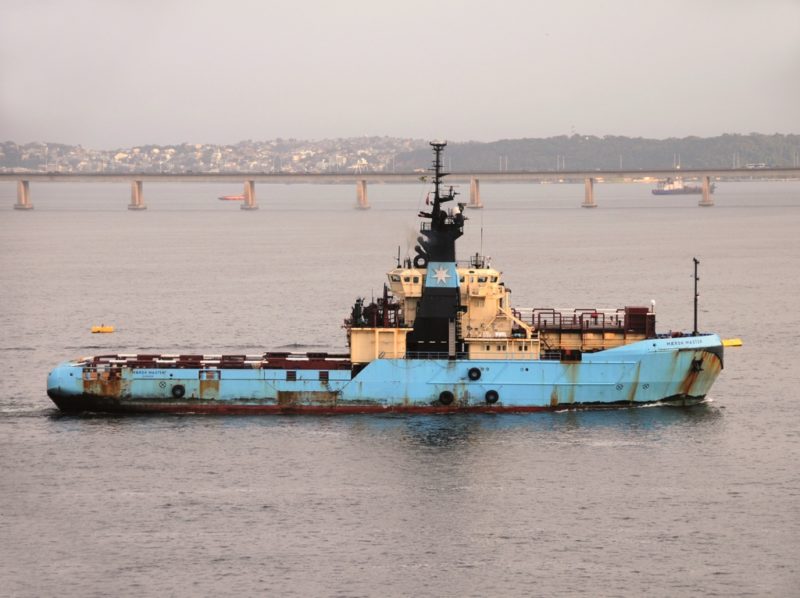
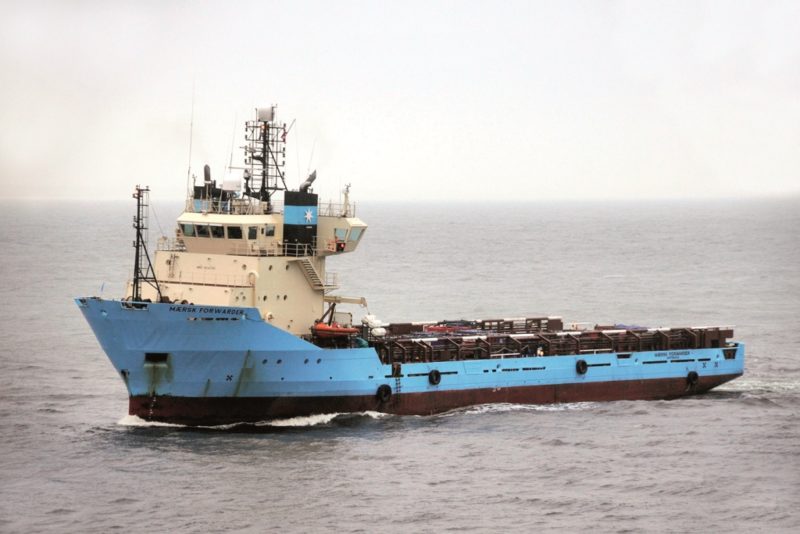
A.P. MøLLER-MæRSK SUBSIDIARIES CONTAINER SHIPS
In general, a ship with a ‘Mærsk’ prefix to her name indicates itis owned by Mærsk Line Ltd. of the American subsidiary company located at Norfolk (Va), or ships of the British, Singapore and Hong Kong subsidiary companies, or a ship chartered from third party outside owners.
There have been a huge number of these ships over the last 15 years including ten ships of 1,500TEU capacity in Mærsk Abidjan, Mærsk Accra, Mærsk Apapa, Mærsk Athens, Mærsk Auckland, MærskMalaga, Mærsk Marseille, Mærsk Piraeus, Mærsk Ravenna and Mærsk Rotterdam.These ships have also been built in the following classes:-
- ‘A’ CLASS of 9,580 TEU capacity built in 2007/08 Mærsk Alfirk, Mærsk Algol, Mærsk Altair, Mærsk Antares.
- ‘B’ CLASS of 3,194 TEU capacity built in 2009/10 Mærsk Bali, Mærsk Batam, Mærsk Batur, Mærsk Bintan, Mærsk Bogor, MærskBrani, Mærsk Bratan,Mærsk Balam, Mærsk Buton.
- ‘C’ CLASS of 4,500 TEU capacity built in 2011/12 Mærsk Cabo Verde, Mærsk Calabar, Mærsk Cameroun, Mærsk Cape Coast, Mærsk Cape Town, MærskChennai, Mærsk Colombo, Mærsk Conokry, Mærsk Congo, Mærsk Copenhagen,Mærsk Cotonou, MærskCuanza, Mærsk Cuneng, Mærsk Cairo, Mærsk Casablanca, Mærsk Cubango.
- ‘D’ CLASS of 5,000 TEU capacity built in 2005/08 Mærsk Dalton, Mærsk Damietta, Mærsk Danang, Mærsk Danbury, Mærsk Darlington, Mærsk Dartford,Mærsk Dauphin, Mærsk Davenport, Mærsk Delano, Mærsk Delmont, Mærsk Denpasar, Mærsk Derince,Mærsk Dellys, Mærsk Dhahran, Mærsk Diandema, Mærsk Dieppe, Mærsk Drammen, Mærsk Drummond, Mærsk Drury, Mærsk Dryden, Mærsk Dubrovnik.
- ‘E’ CLASS of 13,092 TEU capacity built in 2010/11 Mærsk Elba, Mærsk Eindhoven, Mærsk Edinburgh, Mærsk Edison, Mærsk Edmonton, Mærsk Emden, Mærsk Essen, Mærsk Essex, Mærsk Eubank, Mærsk Evora.
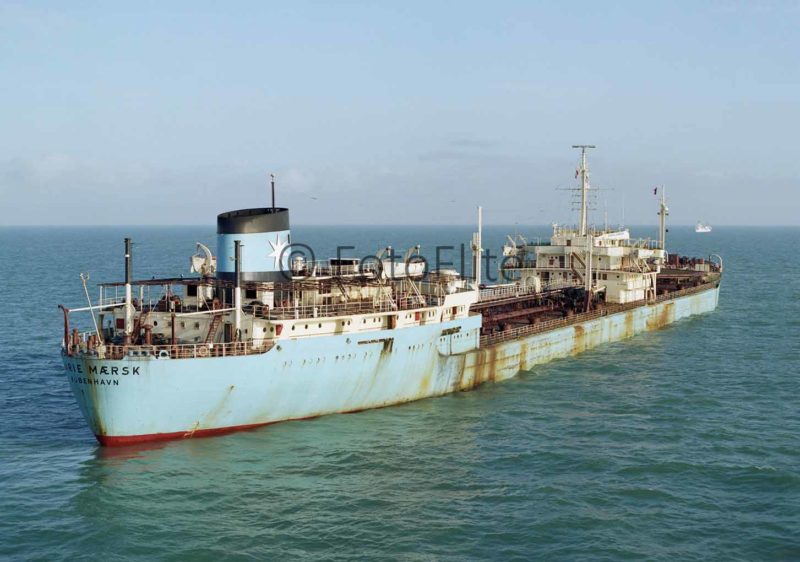
- ‘G’ CLASS of 4,338 TEU capacity built in 2005/06 Mærsk Gateshead, Mærsk Gairloch, Mærsk Gironde, Mærsk Garonne, Mærsk Geelong, Mærsk Georgia, Mærsk Missouri, Mærsk Caroilina, Mærsk Iowa, Mærsk Montana, Mærsk Ohio, Mærsk Utah, Mærsk Virginia.
- ‘J’ CLASS of 2,872 TEU capacity built in 2001/02 Mærsk Jaipur, Mærsk Jambi, Mærsk Jaun, Mærsk Jefferson, Mærsk Jubail, Mærsk Jurong, Mærsk Jefferson, Mærsk Jakobstad, Mærsk Jena, Mærsk Jennings.
- ‘K’ CLASS of 6,820 TEU capacity built in 1998/2004 Mærsk Kalamata, Mærsk Kampala, Mærsk Karachi, Mærsk Karlskrona, Mærsk Kawasaki, Mærsk Kleven, Mærsk Kelso, Mærsk Kensington, Mærsk Kinloss, Mærsk Kendal, Mærsk Kimi, Mærsk Kalmar, MærskKobe, Mærsk Kokura, Mærsk Kolkata, Mærsk Kotka, Mærsk Kure.
- ‘L’ CLASS of 8,850 TEU capacity built in 2011/12 Mærsk Laguna, Mærsk La Paz, Mærsk Lebu, Mærsk Leon, Mærsk Leticia, Mærsk Laberinto, MærskLabrea, MærskLavras, Mærsk Lamani, Mærsk Lanco, Mærsk Lota, Mærsk Luz, Mærsk Lirquen, Mærsk Lima, Mærsk Londrina.
- ‘N’ CLASS of 2,600 TEU capacity built in 2001/08 Mærsk Nassau, Mærsk Newark, Mærsk New Orleans, Mærsk Newport, Mærsk Needham, Mærsk Niagara, Mærsk Niamey, Mærsk Nienburg, Mærsk Nijmegen, Mærsk Nimes, Mærsk Niteroi, Mærsk Norfolk, MærskNorwich, Mærsk Nottingham, Mærsk Newcastle, Mærsk Noumea, Mærsk Newbury, Mærsk Newhaven, Mærsk Northampton, Mærsk Northwood.
- ‘S’ CLASS of 5,650 TEU capacity built in 2007/08 Mærsk Sarnia, Mærsk Saigon, Mærsk Salalah, Mærsk Salina, Mærsk Sana, Mærsk Santana, Mærsk Savannah, Mærsk Semarang, Mærsk Seoul, Mærsk Semakau, Mærsk Sembawang, Mærsk Senang, Mærsk Sentosa, Mærsk Seville, Mærsk Sebarok, Mærsk Seletar, Mærsk Serangoon, Mærsk Sheerness, Mærsk Singapore, Mærsk Stepnica, Mærsk Stockholm, Mærsk Stralsund, Mærsk Surabaya, Mærsk Sydney.
- ‘T’ CLASS of 8,112 TEU capacity built in 2007/08 Mærsk Tanjong, Mærsk Taurus, Mærsk Taikung, Mærsk Tukang.
- ‘V’ CLASS of 1,800 TEU capacity built in 2010/11 Mærsk Valencia, Mærsk Vigo, Mærsk Valletta, Mærsk Valparaiso, Mærsk Vancouver, Mærsk Venice,Mærsk Vallvik, Mærsk Varna, Mærsk Vilnius, Mærsk Visby.
- ‘W’ CLASS of 1,800 TEU capacity built in 2010/11 Mærsk Wakayama, Mærsk Walvis Bay, Mærsk Warsaw, Mærsk Wellington, Mærsk Westport, Mærsk Weymouth, Mærsk Wiesbaden, Mærsk Willemstadt, Mærsk Wilmington, Mærsk Windhoek, Mærsk Winnipeg, Mærsk Wismar, Mærsk Wolfsburg, Mærsk Wolgast.
- ‘H’ CLASS of 14,000 TEU capacity built in 2017 Mærsk Honam, Mærsk Halifax and seven sisters from the Hyundai yard in South Korea. Mærsk Honam suffered serious damage in a fire on 6th March 2018, resulting in one of the biggest general average insurance claims in the history of container shipping. The vessel required ship surgery and was rebuilt in South Korea.
Please note that the above list is not exhaustive, and is only intended as a guide.
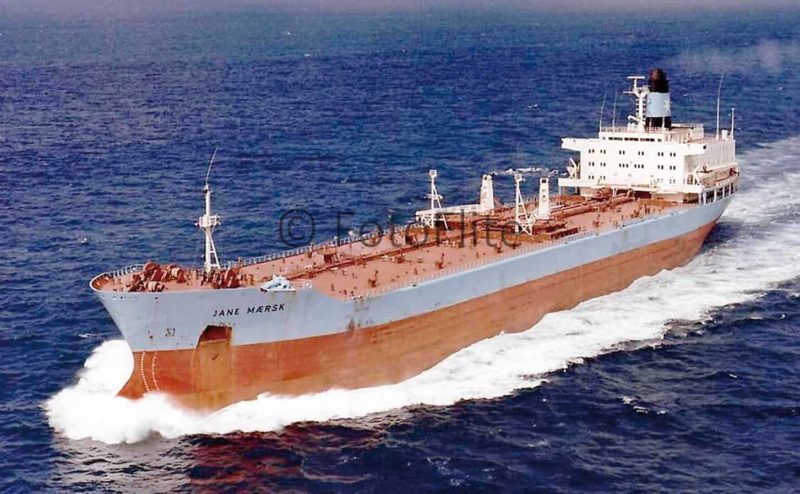
MæRSK TANKER and SUPPLY SHIP CLASSES
There are currently over one hundred tankers in service with the Tanker Division of A. P. MøllerMærsk, plus a large fleet of anchor handling tugs, pollution control vessels, oil rig supply vessels supplying both owned and chartered jack-up and semi-submersible oil drilling rigs, including three owned semi-submersible drilling rigs built in 2010 by the Keppel Fels yard in Singapore. This trio have dimensions of length 117.0 metres, beam of 78.0 metres and a draft of 20.5 metres and are named Mærsk Discoverer, Mærsk Deliverer and Mærsk Developer. Thus, it can be seen that the Tanker Division is of huge importance to Møller Mærsk in the future.
Mærsk oil rig supply vessels have been busy in the North Sea and all of the other major offshore oil projects in the world for almost 60 years. A. P. Møller has held the concession for the exploration and production of oil and gas in the Danish sector of the North Sea as well as on shore since 1962. The first exploration well was drilled in the Danish sector of the North Sea in 1966, and this rig was supplied by the first pair of Mærsk supply vessels built during 1966/67 for Mærsk Supply Service. The loss of one of these pioneers on17th January 1972 with her crew of nine some 40 miles west of Blaavands Huk near Esbjerg during a storm while on her way back to Esbjerg did not diminish the exploration effort. The first field was discovered in 1971 and oil production began from the Dan field located 204 kilometres west of Esbjerg in 1972. Sixteen oil and gas fields were found over the next thirty years and are named after Danish kings and mythical figures as Skjold, Roar, Rolf, Kraka, Tyra, Gorm, Ragnar, Halfdan, Dagmar, Valdemar, Syd Arne, Svend, Harald, Lulita and Siri.
Mærsk Supply Service had fourteen supply vessels in service in 1974, with anchor handling tugs of the ‘B’ class used for the movement of oil exploration rigs in service in 1976. Mærsk Battler, Mærsk Beater and Mærsk Blower worked in the Brazilian and Persian Gulf oilfields during 1981 before returning home to work in the North Sea oilfields. Two Mærsk support vessels worked off Alaska in 1985 supporting pioneer oil explorations in the Bering Sea, and using the product tanker Mærsk Prima and bulker Mærsk Serangoon as floating supply bases. There were fifty Mærsk oil rig supply vessels, anchor handling tugs in service in 2005, and had been built in ‘A’, ‘B’, ‘C’, ‘D’, ‘F’, ‘H’, ‘L’, ‘M’, ‘N’, ‘P’, ‘R’, ‘S’ and ‘T’ classes. Mærsk Defender operated as a Diving Support Ship, and Mærsk Dee as a Rescue Ship, with Mærsk Assister, Mærsk Achiever and Mærsk Attender as anchor handlers and for oil construction work.
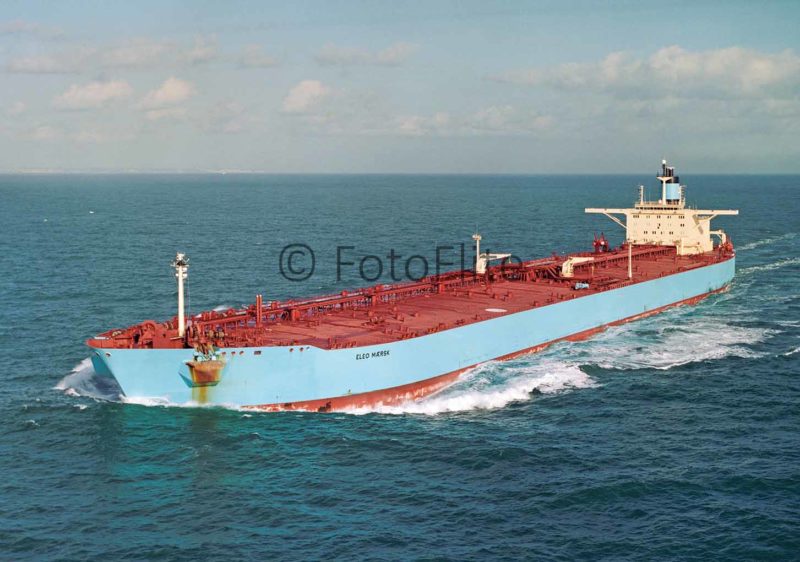
The large supply fleet of Mærsk support vessels have supplied not only Møller owned jack-up and semi-submersible oil rigs, but have worked on contract in many oilfields across the world. Mærsk Rover, delivered in 1982, was one of six ‘R’ class of very powerful anchor handlers with a maximum bollard pull of 160 tonnes, a winch capable of lifting 260 tonnes, and a crane of 60 tonnes capacity. The two largest supply ships were Mærsk Master and Mærsk Mariner of 3,949grt completed in 1986 with dynamic positioning systems, bollard pull of 175 tonnes, a crane of 80 tonnes capacity, and could also be used for firefighting and rescue duties. Pipe carriers such as Mærsk Norseman and Mærsk Feeder were built in the early 1990s to the Norwegian Ulstein UT705 design. Six combined ‘S’ class supply vessels and anchor handlers were built at the Keppel yard in Singapore in 1999.
Mærsk Nexus and Mærsk Nomad of 4,233grt work as pollution control vessels for Mærsk Supply Service, and the tie-in of umbilicals from the oil well head to FPSOs is carried out by specialist diving vessels such as Mærsk Defender of 1976, which operated in that role between 1980 and 1991. Cableships are used for electrical and telecommunications cable laying and repairing and for oil related work, with Mærsk Forwarder, Mærsk Defender, Mærsk Recorder, Mærsk Repeater, Mærsk Responder and Mærsk Reliance and others used in this role. Mærsk Supply Service Canada Ltd. has ten offshore supply vessels and vessels of other roles in Mærsk Challenger, Mærsk Chancellor, Mærsk Chignec to, Mærsk Detector and Mærsk Dispatcher built in 2006, Mærsk Gabarus, Mærsk Nascopie, Mærsk Norseman, Mærsk Nexus, and Mærsk Placentia.
The classes of deep sea oil and gas tankers that have been built for the Group over the last 90 years since 1928 are numerous, with sisters Emma Mærsk and Marie Mærsk of 13,580 dwt in 1928, Anna Mærsk of 8,625 dwt in 1928, sisters Caroline Mærsk and Jane Mærsk of 12,725 dwt in 1928, Aase Mærsk and Katrine Mærsk of 9,605 dwt in 1930, Eleonora Mærsk of 16,000 dwt in 1936, and Henning Mærsk and Inge Mærsk of 14,600 dwt during 1936/39. During World War II and after the war, tankers were built in larger classes as follows:-
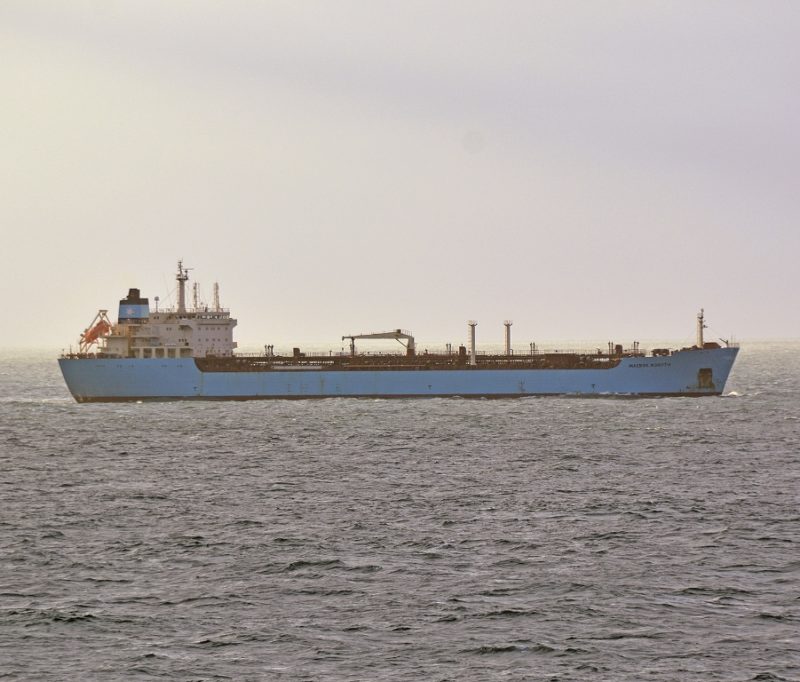
- ‘H’ CLASS of 15,540 dwt built in 1940/45 Henning Mærsk (seized by Germany), Katrine Mærsk, Caroline Mærsk with a sister completed for a French tanker company in 1949 and purchased by Møller Mærsk in 1956, renamed Brigantine.‘M’ CLASS of 16,600 dwt built in 1948/53 Marie Mærsk, Eleonora Mærsk, Mette Mærsk, Valkyrien Mærsk, Jane Mærsk, Elisabeth Mærsk, Dorthe Mærsk, Ebba Mærsk. Sofie Mærsk, and two larger tankers of 18,250 dwt, Anglo Mærsk and Karen Mærsk.
- ‘R’ CLASS of 12,950 dwt built in 1951/54 Rosa Mærsk, Nelly Mærsk, Charlotte Mærsk, Betty Mærsk, Pernille Mærsk, Tove Mærsk.
- ‘G’ CLASS of 19,000 dwt built in 1950/55 Gerd Mærsk, Helene Mærsk, Brigit Mærsk, Jakob Mærsk, McKinney Mærsk, Olivia Mærsk, Jane Mærsk, Kate Mærsk, Prima Mærsk, Adrian Mærsk.
- ‘REGINA’ CLASS of 26,250 dwt built in 1955 Regina Mærsk, Francine Mærsk.
- ‘A’ CLASS of 20,100dwt built in 1957/60 Axel Mærsk, Alva Mærsk, Anders Mærsk, Arild Mærsk, Arthur Mærsk, Albert Mærsk, Alexander Mærsk, Arnold Mærsk.
- ‘E’ CLASS of 29,400 dwt built in 1957/59 Eli Mærsk, Emma Mærsk, Evelyn Mærsk, Eleo Mærsk.
- ‘G’ CLASS of 26,760 dwt built in 1959/60Gudrun Mærsk, Gunvor Mærsk, Gjertrud Mærsk.
- ‘K’ CLASS of 39,200 dwt built in 1960/62 Caroline Mærsk, Katrine Mærsk, Kristine Mærsk.
- ‘O’ CLASS of 34,100 dwt built in 1962/64 Oluf Mærsk, Henning Mærsk, Marie Mærsk, Karen Mærsk.
- ‘P’ CLASS of 52,400 dwt built in 1963/65 Peter Mærsk, Prima Mærsk, Anglo Mærsk.
- ‘E’ CLASS of 99,500 dwt built in 1966/68 Eli Mærsk, Evelyn Mærsk, Elisabeth Mærsk, A. P. Møller.
- ‘G’ CLASS of 63,675 dwt built in 1963/64 Gerd Mærsk, Emma Mærsk.
- ‘S’ CLASS of 81,160 dwt built in 1964/66 Sofie Mærsk, Sine Mærsk, Svendborg Mærsk with Sofie Mærsk the first Mærsk ‘all aft’ design in October 1964.
- ‘J’ CLASS of 83,900 dwt built in 1966 Jakob Mærsk, Jane Mærsk‘D’ CLASS of 205,700 dwt built in 1968/69The first VLCCs in the fleet in Dirch Mærsk, Dagmar Mærsk, Dorthe Mærsk
- ‘R’ CLASS of 289,065 dwt built in 1971/73 Regina Mærsk, Rasmine Mærsk, Richard Mærsk, Rosa Mærsk, Roy Mærsk, Robert Mærsk, Romo Mærsk, Ras Mærsk.
- ‘K’ CLASS of 339,100 dwt built in 1974/77 Katrine Mærsk, Kristine Mærsk, Kirsten Mærsk, Karoline Mærsk, Kate Mærsk, Karen Mærsk, Karama Mærsk.
- ‘J’ CLASS of 55,000 dwt built in 1975/76 Jane Mærsk, Jakob Mærsk, Jeppesen Mærsk, Jesper Mærsk, Jessie Mærsk.
- ‘G’ CLASS of 32,050 dwt built in 1974/77 Gjertrud Mærsk, Grete Mærsk, Gudrun Mærsk, Gunvor Mærsk, Gerd Mærsk.
- ‘N’ CLASS of 64,900 dwt built in 1977/79 Nora Mærsk, Nele Mærsk, Nelly Mærsk, Nicolai Mærsk, Nicoline Mærsk, Niels Mærsk.
- ‘P’ CLASS of 47,800 dwt built in 1981 Peter Mærsk, Paula Mærsk, Prima Mærsk.
- ‘H’ CLASS of 13,845 dwt built in 1982 Herta Mærsk, Hulda Mærsk, Hans Mærsk, Henriette Mærsk.
- ‘D’ CLASS of 99,800 dwt built in 1983 Dagmar Mærsk, Dirch Mærsk, Dorthe Mærsk with all three later converted into FPSOs.
- ‘E’ CLASS of 50,000 dwt built in 1984/87 Emma Mærsk, Evelyn Mærsk, Eleo Mærsk, Estelle Mærsk, A. P. Møller.
- ‘R’ CLASS of 27,350 dwt built in 1986/87 Romo Mærsk, Ras Mærsk, Rasmine Mærsk, Rita Mærsk, Robert Mærsk.
- ‘N’ CLASS of 276,736 dwt built in 1989/90 Nicoline Mærsk, Niels Mærsk, Mærsk Navigator, Mærsk Nautilus.
- ‘V’ CLASS of 81,283 dwt built in 1988 Valkyrien Mærsk, Virtue Mærsk.
- ‘E’ CLASS of 300,000 dwt built in 1992/2005 Eleo Mærsk, Elisabeth Mærsk renamed Ehm Mærsk, Estelle Mærsk, Emma Mærsk, Ellen Mærsk, Effie Mærsk, Elisabeth Mærsk, Emilie Mærsk, Eli Mærsk, Ellen Mærsk, Else Mærsk, Millennium Mærsk. Eleo Mærsk of 1992 was the first double hull VLCC to be built in the world.
- ‘P’ CLASS of 85,000 dwt built in 1999/2001 Paula Mærsk, Peter Mærsk, Mærsk Prosper, Mærsk Pointer, Mærsk Pride, Mærsk Prime. Mærsk Princesssold in 2004, Mærsk Pristine, Mærsk Princess.
- ‘R’ CLASS of 30,000 dwt built in 1999/2004 Ras Mærsk renamed Mærsk Rhine, Roy Mærsk, Ras Mærsk, Ribe Mærsk, Romoe Mærsk, Robert Mærsk, Richard Mærsk, Rita Mærsk, Rosa Mærsk, Mærsk Ramsey, Mærsk Rapier, Mærsk Regent, Mærsk Richmond, Mærsk Rochester, Mærsk Rye, Mærsk Rosyth, Mærsk Ramsgate, Mærsk Radiant, Mærsk Ramsey (2), Mærsk Rye (2).
- ‘H’ CLASS of 300,000 dwt built in 2000/2010 Mærsk Hayama, Mærsk Hakong, Mærsk Hakata, Mærsk Hirado, Mærsk Hojo, Mærsk Ilma, Mærsk Ingrid, Mærsk Isabella, Mærsk Simone, Mærsk Nectar, Mærsk Nautica, Mærsk Nautilus, Mærsk Neptune, Mærsk Newton, Mærsk Noble, Mærsk Sandra, Mærsk Sara.
- ‘P’ CLASS of 110,000 dwt built in 2005/08 Mærsk Pearl, Mærsk Pelican, Mærsk Penguin, Mærsk Petrel, Mærsk Phoenix, Mærsk Piper, Mærsk Prosper, Mærsk Princess, Mærsk Privilege, Mærsk Producer, Mærsk Progress, Mærsk Promise.
- SHUUTLE TANKER of 130,000 dwt built in 1998 Loch Rannoch for Mærsk Co. Ltd., London on long term charter to BP Shipping Ltd. for the shuttle from the Schiehallion field to west of the Shetlands to Sullom Voe refinery.
- ‘B’ CLASS of 29,100 dwt built in 2005/08 Brigit Mærsk, Britta Mærsk, Mærsk Beaufort, Mærsk Belfast, Mærsk Bering, Mærsk Borneo.
- ‘K’ CLASS of 39,750 dwt built in 2008/2012 Karen Mærsk, Mærsk Kara, Mærsk Kate, Mærsk Kalea, Mærsk Katalin, Mærsk Katarina, Mærsk Kaya, Mærsk Kiera.
- ‘T’ CLASS of 50,000 dwt built in 2015/18 Mærsk Tacoma, Mærsk Tampa, Mærsk Tangier, Mærsk Teesport, Mærsk Tianjin, Mærsk Tokyo, Mærsk Torshavn, Mærsk Trieste, Mærsk Trenton and one other from the Sungdong yard.
Please note that the above list is not exhaustive, and is only intended as a guide.
Sixteen MR (Medium Range) and LR2 (Clean product) tankers were delivered during 2019 out of an order book for 25 tankers, with ten from the Sungdong yard in South Korea and six from the Samsung yard in Ningbo, China. The remaining MR (Medium Range) tankers on order will be delivered during 2020. The Møller-Mærsk tanker fleet operates in five pools in the Aframax, Intermediate, Handy size, Medium Range and LR2 size pools.
MæRSK GAS TANKER CLASSES
There have been many classes of Mærsk gas tanker since the first was completed in 1972 as Inge Mærsk of 11,835 dwt by the famous Moss Rosenborg Verft A/S yard in Stavanger and builder of many gas tankers. The largest Mærsk gas tankers until 2004 were Inger Mærsk of 80,000 cubic metres capacity and 44,493 grt built in 1992, and Crystal Marine of 45,801 grt and completed in 2003 with Mærsk as managers for Kumiai Navigation (Pte) of Singapore. Inger Mærsk arrived on 1st November 1996 at the N’Kossa terminal in the Congo for use as a FGSO gas storage tanker after being rebuilt for Gas Management (Congo) Ltd. on charter to Elf Congo and operated by Mærsk Contractors, and renamed Nkossa II. Mærsk Ras Laffan of 93,226grt and 73,705 dwt came into service in April 2004 for Qatar Shipping Ltd., in which Mærsk had a 25% interest for LNG trading from her namesake port in Qatar. She was the first of a new generation of LNG ships specially designed for the enormous Qatar gas trade of the future, with six sister ships completed up to 2008.
- ‘C’ Class of 11,835 dwt built in 1972 Mærsk Cadet (ex Inge Mærsk), Mærsk Commander (ex Sine Mærsk), Mærsk Captain (ex Sofie Mærsk).
- ‘S’ CLASS of 18,270dwt built in 1981 Svendborg Mærsk, Sally Mærsk, Susan Mærsk, Svend Mærsk, Sine Mærsk, Sofie Mærsk.
- ‘G’ CLASS of 14,520 dwt built in 1989 Gjertrud Mærsk, Gudrun Mærsk.
- ‘H’ CLASS of 23,257 dwt built in 1993/2000 Hans Mærsk, Helene Mærsk, Henning Mærsk, Henriette Mærsk, Mærsk Humber, Mærsk Holyhead.
- ‘J’ CLASS of 27,250 dwt built in 1991 Jakob Mærsk, Jane Mærsk, Jesper Mærsk, Jessie Mærsk.
- ‘N’ CLASS of 16,259 dwt built in 1991 Niels Mærsk, Mærsk Scotland.
- LNG CLASS of 73,705/82,000 dwt built in 2004/06. Mærsk Ras Laffan, Mærsk Qatar both from the Samsung yard at Keoje Island in South Korea. They were sold in 2012 to the Pronav LNG fleet of Germany and renamed Milaha Ras Laffan and Milaha Qatar. Mærsk Arwa, Mærsk Marib, Mærsk Magellan, Mærsk Methane and Mærsk Meridian were slightly larger and were sold to Teekay LNG in early 2012 after it had acquired all of the shares of Mærsk LNG A/S. The Teekay quintet were renamed Arwa Spirit, Marib Spirit, Magellan Spirit, Methane Spirit and Meridian Spirit.
Please note that the above list is not exhaustive, and is only intended as a guide.
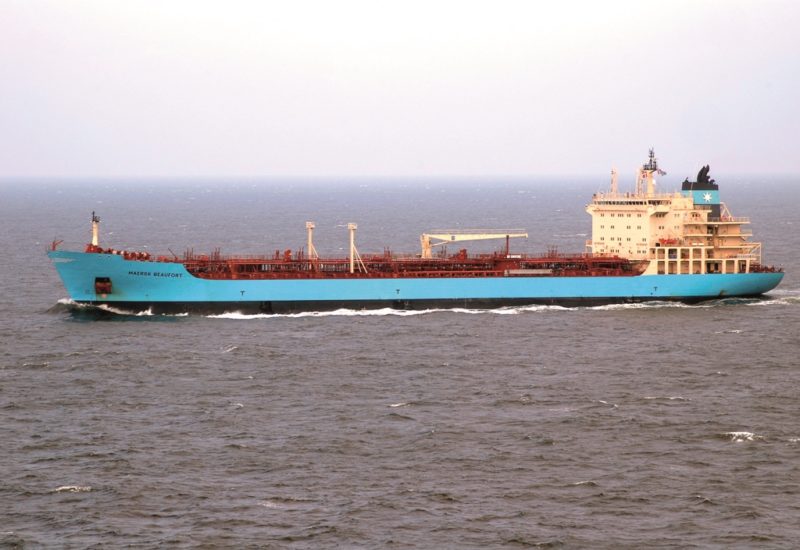
POSTSCRIPT
Mærsk Line in the year 2020 is forging ahead with the integration of the big Hamburg Sud container fleet into the reorganised worldwide container strings and networks serving 343 ports in 121 countries. The integration and reorganisation of the logistics, freight forwarding, and the various routes of container and multi-purpose shipping of both great shipping companies is also a priority for the year.
The total Møller-Mærsk revenue per year is high enough to give scope for the assessment of new business ventures. However, Møller-Mærsk have committed many very big container ships on the Far East to Europe container route, and with Chinese exports falling badly this could prove to be a headache for the Group in moving some of them to alternative routes. Møller-Mærsk revenue and profits per quarter in 2020 are running at increased rates over 2019 figures.
New low emission fuels are being developed in 2020 by Møller-Mærsk in association with Wallenius Wilhelmsen and the BMW Group e.g. a blend of lignin and ethanol. A.P. Møller-Mærsk is also a founding member of the U. N. Climate Action Group in New York for the decarbonising of global shipping and other energy chains, and has already achieved a 41% reduction of emissions relative to cargo moved over the last decade. The intention is to have the first commercial deep sea carbon


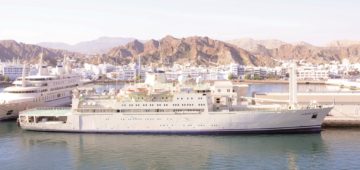


Comments
Sorry, comments are closed for this item